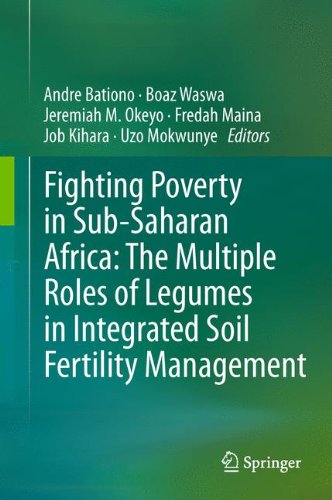

Most ebook files are in PDF format, so you can easily read them using various software such as Foxit Reader or directly on the Google Chrome browser.
Some ebook files are released by publishers in other formats such as .awz, .mobi, .epub, .fb2, etc. You may need to install specific software to read these formats on mobile/PC, such as Calibre.
Please read the tutorial at this link: https://ebookbell.com/faq
We offer FREE conversion to the popular formats you request; however, this may take some time. Therefore, right after payment, please email us, and we will try to provide the service as quickly as possible.
For some exceptional file formats or broken links (if any), please refrain from opening any disputes. Instead, email us first, and we will try to assist within a maximum of 6 hours.
EbookBell Team

4.7
16 reviewsInclusion of legumes in cropping systems can play an increasingly important role to maintain soil fertility and sustain crop production. Legumes are an important source of nutrition to both humans and livestock by providing the much needed protein, minerals, fiber and vitamins. The sale of legumes seed, leaves and fiber generates income for the marginalized communities especially women in the dryland areas. Cultivation of legumes is essential for the regeneration of nutrient-deficient soils. Legumes can be incorporated into cropping systems as green manure, intercropped or rotated with cereals and as leguminous shrubs in improved fallow systems. By biologically fixing nitrogen (BNF) in the soil, legumes provide a relatively low-cost method of replacing otherwise expensive inorganic nitrogen in the soil. Legumes also improve other soil physical properties, provide ground cover and reduce soil erosion, increase soil organic matter, cation exchange capacity, microbial activity and lowers soil temperature and suppress weeds and pests. All these beneficial effects result in enhanced soil fertility and boosts subsequent cereal crop yields. Legumes therefore play an important role of improving the livelihoods of smallholder farmers around the world.
Despite the above benefits, production of legumes in SSA is hampered by a number of constraints. Most soils in SSA are deficient in key nutrients especially phosphorus that is essential for proper legume establishment. Other limitations include low soil pH, high salinity, drought and flooding. Legume production is also hindered by new diseases, pests, and weeds, which farmers need to learn how to control if the full benefits of legumes are to be gained. Beyond the abiotic factors are issues of access to inputs (improved seed and fertilizers), markets and access to relevant production information. This book presents a synthesis of research work on legumes and draws attention to the importance of legumes in integrated soil fertility management (ISFM) and poverty alleviation in SSA.